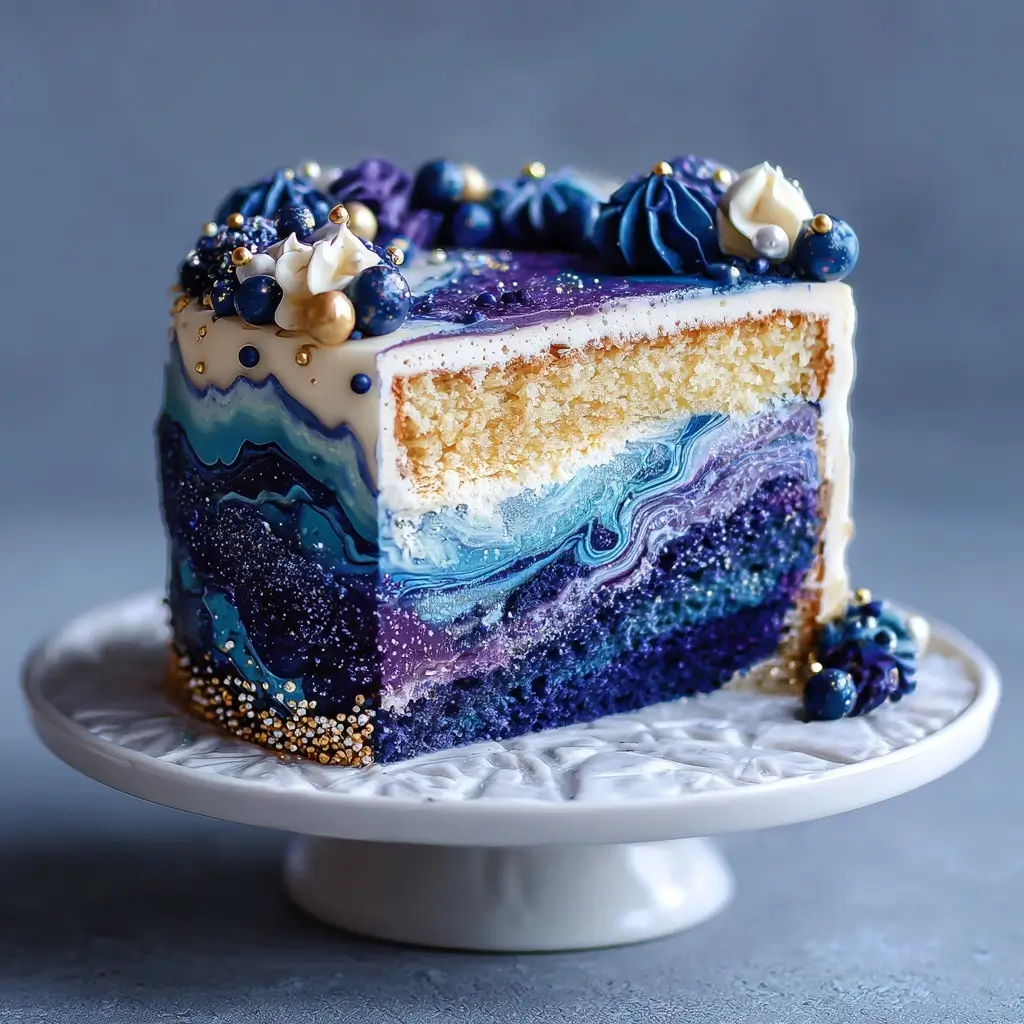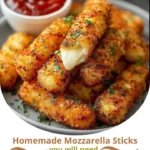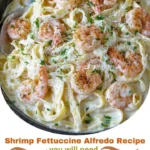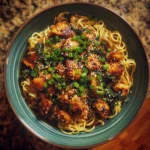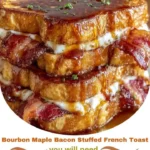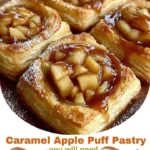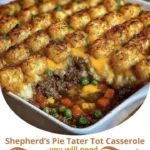Galaxy Cake: A Cosmic Delight That Shines on Every Occasion
The History of the Galaxy Cake
The Galaxy Cake is a relatively modern confection that emerged in the early 2010s as part of the growing trend in artistic baking and visually stunning desserts. Inspired by the awe-inspiring beauty of outer space, nebulae, and distant galaxies captured by telescopes like Hubble, bakers began experimenting with vibrant colors, shimmering finishes, and abstract patterns to recreate the cosmos in edible form. While there’s no single inventor credited with creating the first Galaxy Cake, its rise in popularity can be attributed to social media platforms such as Instagram, Pinterest, and YouTube, where food artists shared their colorful creations with millions.
Originally rooted in fondant-covered cakes adorned with hand-painted galaxy designs, the concept evolved into buttercream-based masterpieces using airbrushing techniques, edible glitter, and liquid dyes. The cake quickly became a favorite for themed birthday parties—especially among children fascinated by space—but has since been embraced by adults for anniversaries, baby showers, and even weddings. Its versatility allows it to transcend age and occasion, making it not just a dessert but a centerpiece of celebration. Over time, professional pastry chefs and home bakers alike have refined the methods behind achieving realistic star fields, swirling nebula clouds, and twinkling constellations—all while maintaining delicious flavor profiles beneath the visual spectacle.
Ingredients Breakdown: What Makes a Galaxy Cake So Magical?
The magic of a Galaxy Cake lies not only in its appearance but also in the thoughtful selection of ingredients that contribute to both taste and texture. At its core, this cake typically consists of three components: the cake layers, the filling or frosting, and the decorative elements that bring the galactic theme to life.
Cake Layers
- All-purpose flour: Provides structure and stability to the sponge.
- Granulated sugar: Sweetens the batter and helps create a tender crumb.
- Baking powder & baking soda: Leavening agents that ensure a light, fluffy rise.
- Salt: Enhances overall flavor and balances sweetness.
- Eggs: Bind ingredients together and add moisture and richness.
- Unsalted butter (softened): Adds flavor and contributes to a moist texture.
- Vanilla extract: Imparts a warm, aromatic note that complements other flavors.
- Milk or buttermilk: Keeps the cake soft; buttermilk adds slight tanginess and tenderness.
Frosting (Buttercream Base)
- Unsalted butter (room temperature): Forms the creamy foundation of the frosting.
- Confectioners’ sugar (powdered sugar): Sweetens and thickens the buttercream.
- Heavy cream or milk: Adjusts consistency for smooth spreading or piping.
- Vanilla or almond extract: Enhances flavor depth without overpowering.
- Corn syrup (optional): Adds shine and prevents cracking in humid conditions.
Coloring and Decorative Elements
- Gel food coloring (deep blue, purple, black, magenta, turquoise): Preferred over liquid due to intensity and minimal impact on texture.
- Edible luster dust (silver, gold, pearl, cosmic blue): Creates shimmering effects mimicking stars and stardust.
- Edible glitter or disco dust: Adds sparkle and dimension across the surface.
- Airbrush food colors (if available): Allows for gradient blending similar to real nebulas.
- Black cocoa powder (optional): Used in small amounts to deepen chocolate layers for a “midnight sky” effect.
- Edible metallic paints: For hand-painting stars, planets, or comet trails.
- Sprinkles shaped like stars, moons, rockets: Fun accents for themed events.
Step-by-Step Recipe: How to Make a Stunning Galaxy Cake from Scratch
Part 1: Baking the Cake Layers
- Preheat your oven to 350°F (175°C). Grease and flour two or three 8-inch round cake pans, then line the bottoms with parchment paper for easy release.
- In a medium bowl, whisk together 2 ½ cups all-purpose flour, 2 ½ tsp baking powder, ½ tsp baking soda, and ¼ tsp salt. Set aside.
- In a large mixing bowl, beat 1 cup softened unsalted butter with 2 cups granulated sugar until pale and fluffy (about 4–5 minutes).
- Add 4 large eggs, one at a time, beating well after each addition. Mix in 2 tsp vanilla extract.
- Gradually alternate adding the dry ingredients and 1 ¼ cups buttermilk, beginning and ending with the dry mix. Mix just until combined—do not overmix.
- Divide the batter evenly between the prepared pans and smooth the tops with a spatula.
- Bake for 25–30 minutes, or until a toothpick inserted into the center comes out clean. Cool in pans for 10 minutes, then transfer to wire racks to cool completely.
Part 2: Preparing the Buttercream Frosting
- In a stand mixer fitted with a paddle attachment, beat 2 cups room temperature unsalted butter on medium speed for 5 minutes until creamy and nearly white.
- Gradually add 8 cups confectioners’ sugar, one cup at a time, mixing on low to avoid a sugar cloud.
- Add ¼ cup heavy cream, 2 tsp vanilla extract, and optionally 1 tbsp light corn syrup. Beat on high for 4–5 minutes until ultra-smooth and fluffy.
- If desired, divide a portion of the frosting into smaller bowls to be tinted with gel colors later.
Part 3: Assembling and Crumb Coating
- Level the cooled cake layers using a serrated knife or cake leveler if needed.
- Place the first layer on a cardboard cake board or turntable. Spread about ¾ cup of plain buttercream evenly over the top.
- Add the second layer and repeat. Top with the third layer, ensuring all are aligned neatly.
- Apply a thin layer of plain white or lightly colored buttercream over the entire cake—this is called a crumb coat. It seals in loose crumbs.
- Chill the cake in the refrigerator for 20–30 minutes to set the crumb coat.
Part 4: Coloring and Painting the Galaxy Effect
- After chilling, prepare several small bowls of frosting dyed with different gel food colors: deep navy, violet, magenta, electric blue, and hints of black.
- Dab these colored frostings randomly onto the chilled cake’s surface using an offset spatula or palette knife—don’t blend yet.
- Using a clean, large spatula or bench scraper, gently swirl the colors together in circular motions, creating nebula-like streaks and gradients. Avoid overmixing—keep movement dynamic.
- For deeper shadows, use a paper towel or brush dipped in black gel color to smudge dark patches near edges or corners.
- Optional: Use an airbrush kit with edible colors to mist soft gradients of purple-to-blue across sections for added realism.
Part 5: Adding Sparkle and Stardust Details
- Spray or dust the cake generously with edible luster dust using a dry paintbrush or airbrush tool. Focus on areas where colors meet for glowing transitions.
- Lightly sprinkle edible glitter or disco dust over the sides and top—tilt the cake slightly so excess falls off cleanly.
- Use a clean fan brush to apply edible metallic paint (mixed with clear alcohol or lemon extract) in tiny dots across the surface to mimic stars.
- For extra dimension, place edible silver dragées, star-shaped sprinkles, or handcrafted fondant planets around the top edge.
- Allow the cake to rest uncovered for 1–2 hours so decorations fully adhere and any wetness from painting evaporates.
Expert Tips for Creating the Perfect Galaxy Cake
- Always use gel-based food coloring—liquid dyes dilute the frosting and may cause it to become runny or weep.
- Work under good lighting, preferably natural daylight or bright LED lights, to accurately see color blends.
- Cool your cake thoroughly before decorating; warm cakes melt frosting and ruin clean details.
- Don’t fear imperfection: Real galaxies are chaotic and asymmetrical—embrace randomness in your swirls and splatters.
- Use disposable piping bags or plastic wrap when handling dark colors to prevent staining your hands or tools.
- Keep unused frosting covered with damp cloths or plastic wrap to prevent drying out.
- Practice color blending on parchment paper first by smearing tinted buttercream to preview combinations.
- Invest in a rotating cake stand for even application and smoother finishes.
- To reduce sweetness, consider using Swiss meringue buttercream instead of American buttercream—it’s less sugary and more stable.
- Store the finished cake in the fridge if not serving immediately, but bring to room temperature before slicing for best texture.
Variations and Customizations: Make Your Own Universe
The beauty of the Galaxy Cake is its infinite adaptability. Whether you’re celebrating a child’s birthday, a sci-fi fan’s wedding, or just want to impress guests with a show-stopping dessert, here are creative ways to personalize your galactic masterpiece:
Flavor Twists
- Chocolate Galaxy Cake: Replace ½ cup of flour with black cocoa powder for ultra-dark layers resembling the void of space.
- Raspberry Swirl Galaxy: Add a raspberry compote filling between layers—the red bursts resemble exploding supernovae.
- Lavender-Vanilla Galaxy: Infuse buttercream with culinary lavender for a dreamy, floral twist.
- Matcha Nebula: Incorporate matcha powder into one frosting section for green-hued cosmic clouds.
Dietary Adaptations
- Gluten-Free Galaxy Cake: Substitute all-purpose flour with a quality gluten-free blend containing xanthan gum.
- Dairy-Free Version: Use plant-based butter and milk alternatives like oat or almond milk.
- Vegan Galaxy Cake: Combine flax eggs, vegan butter, and aquafaba-based meringue buttercream for a fully plant-powered treat.
- Low-Sugar Option: Opt for erythritol-sweetened powdered sugar substitutes and monk fruit extracts.
Design Themes
- Galactic Unicorn: Blend galaxy colors with rainbow streaks and horn-shaped toppers.
- Black Hole Center: Create a swirling vortex in the middle using progressively darker shades converging inward.
- Constellation Cake: Pipe famous star patterns (Orion, Ursa Major) with edible silver gel pens.
- Planet Accents: Craft small fondant spheres painted like Earth, Saturn, or Mars and arrange them orbiting the top rim.
- Glow-in-the-Dark Effect: Use UV-reactive edible powders and serve under blacklight for a futuristic party experience.
Health Considerations and Nutritional Value
While the Galaxy Cake is undeniably indulgent and designed primarily for special occasions, understanding its nutritional content can help you make informed choices—especially when serving children, those with dietary restrictions, or health-conscious guests.
Nutritional Breakdown (Per Serving, Approximate)
Based on an 8-inch, three-layer cake cut into 12 slices:
- Calories: ~450–550 kcal
- Total Fat: 22–28g (mostly from butter and cream)
- Saturated Fat: 14–16g
- Carbohydrates: 60–70g (primarily from sugar and flour)
- Sugars: 45–55g
- Protein: 4–6g
- Sodium: 200–300mg
Health Notes
- High Sugar Content: The generous amount of confectioners’ sugar makes this cake very sweet. Consider reducing sugar in the frosting or offering smaller portions.
- Allergens: Contains common allergens including dairy, eggs, wheat (gluten), and soy (depending on brand of ingredients used).
- Food Dyes: Some artificial gel colors contain synthetic dyes (like Red 40, Blue 1). For sensitive individuals or young children, opt for naturally derived colorants made from fruits and vegetables (though they may fade faster).
- Edible Glitter and Dust: Ensure products are labeled “edible” and FDA-approved. Non-edible craft glitter should never be used on food.
- Balancing Indulgence: Serve alongside fresh fruit platters or yogurt parfaits to balance the meal. Pair with sparkling water or herbal tea instead of sugary drinks.
Full Ingredient List Recap
Cake Layers
- 2 ½ cups all-purpose flour
- 2 cups granulated sugar
- 2 ½ tsp baking powder
- ½ tsp baking soda
- ¼ tsp salt
- 1 cup unsalted butter, softened
- 4 large eggs
- 2 tsp pure vanilla extract
- 1 ¼ cups buttermilk
Buttercream Frosting
- 2 cups unsalted butter, room temperature
- 8 cups confectioners’ sugar
- ¼ cup heavy cream or whole milk
- 2 tsp vanilla extract
- 1 tbsp light corn syrup (optional, for sheen)
Decorating Supplies
- Gel food coloring: royal blue, violet, magenta, black, turquoise
- Edible luster dust: silver, cosmic blue, pearl white
- Edible glitter or disco dust
- Fondant stars, moon sprinkles, or planet candies (optional)
- Small paintbrushes (food-safe)
- Parchment cones or piping bags
- Rotating cake stand
- Offset spatulas and bench scraper
Detailed Directions Summary
- Bake vanilla cake layers and allow them to cool completely.
- Prepare a batch of smooth, fluffy buttercream frosting.
- Assemble and fill layers, then apply a crumb coat and chill.
- Tint portions of frosting with deep cosmic hues.
- Swirl colors onto the cake in random patches and blend gently with tools.
- Enhance with airbrush gradients or hand-painted shadows if desired.
- Apply edible luster dust and glitter for shimmer and sparkle.
- Add final touches like stars, planets, or constellation lines.
- Let set before slicing and serving.
Frequently Asked Questions (FAQ)
Can I make a Galaxy Cake ahead of time?
Yes! Bake the cake layers up to 2 days in advance and store them wrapped tightly at room temperature. Frosting can be refrigerated for up to 5 days—bring to room temperature and re-whip before use. Assembled cakes can be stored in the fridge for 1–2 days; bring to room temperature before serving for optimal taste and texture.
How do I prevent my frosting from turning gray when mixing dark colors?
Start with white or very light base frosting. Add dark gel colors gradually and avoid over-blending. If graying occurs, refresh the area with untinted frosting and reapply color carefully.
Is the glitter safe to eat?
Only if it’s explicitly labeled as edible glitter. Craft glitter, cosmetic glitter, or non-FDA-approved varieties are unsafe for consumption.
Can I freeze a Galaxy Cake?
You can freeze unfrosted cake layers for up to 3 months. However, once decorated with buttercream and glitter, freezing may cause condensation upon thawing, which can dull colors and dissolve sparkles. Not recommended for fully finished cakes.
Why does my colored frosting look streaky?
This is normal during the swirling process. Letting the cake sit for a few minutes allows the fats in the buttercream to relax and colors to meld slightly. Gentle touch-ups with a warm spatula can smooth transitions.
What can I use instead of gel food coloring?
Liquid food coloring is not ideal—it weakens the frosting’s structure. Natural alternatives include concentrated beet juice (for pink-red), spirulina (for blue-green), and butterfly pea flower tea (for purple), though results may vary in vibrancy and longevity.
How do I get sharp, defined stars?
Use a fine-tipped paintbrush dipped in edible metallic paint or pipe tiny dots with a #1 tip and stiff royal icing. Allow them to dry completely before packaging or transporting.
Can I make a naked galaxy cake?
Absolutely! Leave gaps between swirled colors to expose parts of the cake, creating a “starry night sky” peeking through. This reduces sweetness and offers a modern aesthetic.
Summary
The Galaxy Cake is a breathtaking fusion of artistry and flavor, transforming simple ingredients into a celestial celebration worthy of any occasion. With vibrant colors, shimmering finishes, and endless customization options, it’s more than a dessert—it’s a universe of joy on a plate.
